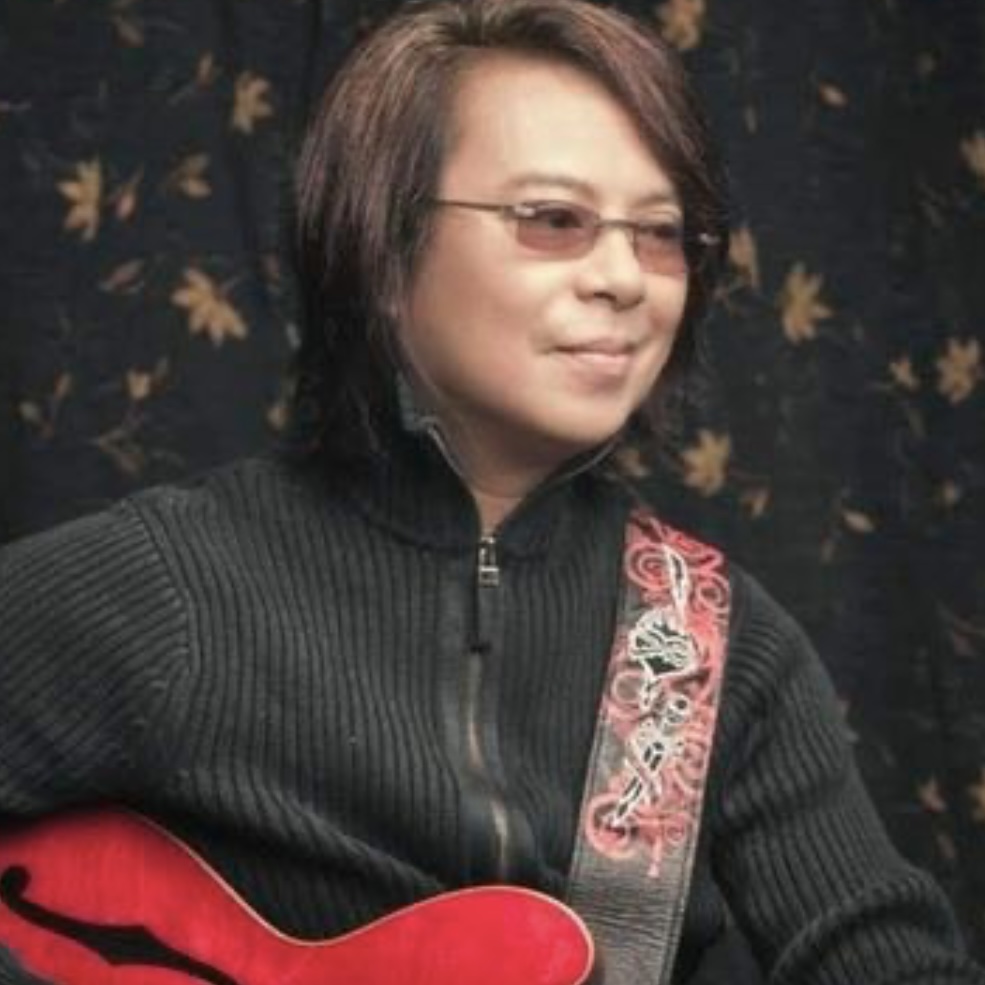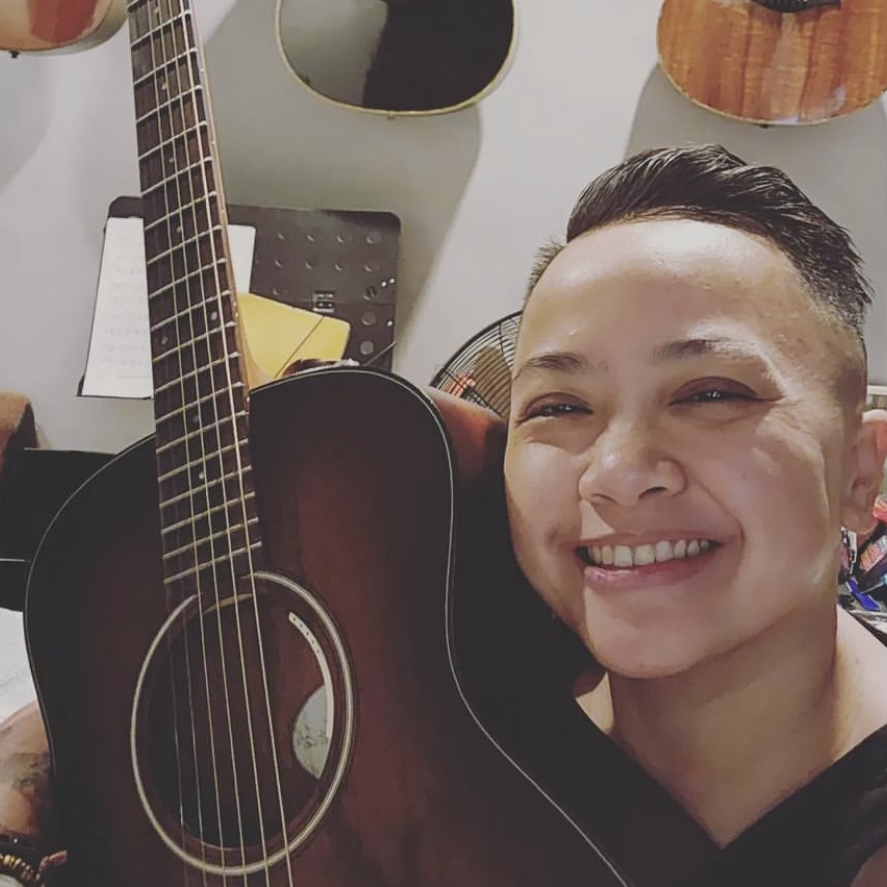Filipinos’ special love affair with singing, playing, and listening to stringed instruments is an undeniable fact, evident from the heydays of traditional harana (serenade), to folk houses where singers were perched in a stool with a mere mic and a dependable acoustic guitar, to lounges, and pubs, and clubs. It is small wonder, then, why Filipino acoustic artists and their music hogged the limelight in the early 2000s, when local artists sprouted all over the country, bravely introducing experimental and distinct music material. During that time, acoustic artists—with their guitars and a humble but impressive ‘K-hon’ (cajon, literally a box that’s a percussion instrument, where each side had a particular drum sound when tapped) that served as a special percussion background—and their home-grown music were soon staples in ‘Sunday sessions’, cocktail parties, TV shows, corporate events, open mic nights, and even in concert halls.
Acoustic music (for most of us who are not musicians) is music stripped instrumentation or the absence of amplification, and live, intimate performance. Alongside this, is also a ‘strip down’ of pretentious lyrics thus, producing well-written music with authentic meaning, and usually sans the excessive audio enhancement or studio trickery. It’s simply raw, relatable, and real.
Most notable Filipino singers such as Regine Velasquez, Kyla, and Carol Banawa, who are not really acoustic artists, have released some acoustic singles and even did acoustic performances, only to prove how music-loving Filipinos relate to acoustic music. However, the early 2000s’ real acoustic music scene reverberated with the songs of Paolo Santos, MYMP, Jimmy Bondoc, Pido (with Take One), Nyoy Volante (and the Manos), Chris Cayzer, Julianne Tarroja, Nina, and of course, the iconic Ice Seguerra.
These acoustic artists hogged the radio airwaves at a time when radio stations could push music personalities across its listeners: Paolo Santos, MYMP, and Jimmy Bondoc, were staples of Wave 89.1 when “easy listening” was still one of its playlist genres; Chris Cayzer and Julianne Tarroja were staples of Jam 88.3 (Chris even had a program with Jam where he would perform stripped down versions of popular songs).
When it came to Filipino acoustics, it usually means acoustic ballads, as it has that particular soothing effect on people, not to mention as most Filipino audiophiles back then were living within a template day-in and day-out—office to work and vice versa—routine. So, going home and unwinding to soothing acoustic ballads always calmed the nerves, and pacified the soul, making it the best way to end any day.
Most of us would like to believe that the acoustic wave in the Philippines had roots in the music of artists like James Taylor, Eric Clapton, and Tracy Chapman. But who are the most prominent Filipino acoustic artists, and where are they now?
Paolo Santos

Paolo Santos, of the Moonlight Over Paris fame, is one of them. Although the lifespan of his stint as an acoustic artist was relatively short-lived, Santos was a superstar acoustic figure in the early 2000s. Looking back, he admitted to not being ready for superstardom because he used to mind his own business, working in the corporate jungle, and playing the guitar used to be just a hobby. Then he started to write songs, got invited to play in a friend’s bar (in exchange for free beer, he said), and when people started frequenting that quaint venue to chill out and unwind by listening to his songs, other bars offered him to play too, until Santos decided to quit his job and follow his passion. Listeners wondered how a shy lanky guy suddenly became the “King of Pinoy Acoustics” and made college students swoon. Looking back, it is safe to say that people loved him not because of his looks but his talent, which has always been at the forefront of each of his shows. Thus, after his jampacked mini concert in De La Salle University, this singer, songwriter, and acoustic guitarist’s career instantly took off. Santos is now married with children but still continues to write songs upon request.

MYMP and Nina

MYMP, short for Make Your Mama Proud, is an acoustic band that also started in the early 2000s. Chin Alcantara founded the band in the mid- 90s to originally play rock. But when Nina joined in 2000, the group transitioned to pop music. Juris Fernandez took Nina’s place after the latter was launched as a solo artist. The band stayed in relative obscurity until they were discovered by Raymund Ryan Santes, station manager of a local radio station, 93.9 iFM. They signed up with Ivory Music, and shelled out five studio albums, and unveiled their first concert at the Music Museum billed as “Especially for You”, also one of their hit remakes. It was quite an enjoyable ride for Juris and Chin (as some fans used to call the duo).

Nina Girado-Enriquez charmed her way to the heart of her audience via her chart-toping singles such as Foolish Heart, Make You Mine, and Jealous. Out of all her remakes, however, her Love Moves in Mysterious Ways was her most successful to date, giving birth to a sold-out concert of the same title. Her Nina Live album became the fourth best-selling certified album, best-selling live album, and best-selling album in the country in the 2000s. With countless awards and citations to her name, Nina was listed as Spotify’s most-streamed female OPM artists in 2018 and 2020. The Philippine Music Registry noted how perfect her voice range, reaching high notes with complete control and unique timbre thus, giving her a special moniker as the Soul Siren. She is now married to Coy Enriquez and is blessed with a daughter.

In 2009, Juris left MYMP and signed as a solo artist under Star Music. She and Nina became staples of the Asap Sessionistas (together Ice Seguerra, Princess Velasco, Duncan Ramos, Richard Poon, Sitti Navarro) Juris is now enjoying marital bliss. Chin was seen in the news in 2020, as a delivery rider of his and his wife’s online food business.
Jimmy Bondoc

Known for his good-looking face and performances of his personally written songs like Let Me Be the One, Hanggang Dito na Lang, and his other original hits, The Man I was With You, Bondoc was initially a radio host for The RnB Show (broadcast over 97.9 Home Radio) together with Duncan Ramos. He eventually became a member of the band called Sabado Boys, alongside South Border’s Luke Mejares, Paolo Santos, and DJ Myke. Bondoc won various awards including Aliw Awards’ “Best Performance in a concert”, “Best Male Performer”, Business Excellence Awards’ and IFM Pinoy Music Awards’ “Best Acoustic Male Performer”, to name a few. He then served as the Vice President Corporate Social Responsibility of the Philippine Amusement Gaming Corporation (PAGCOR) and was eventually appointed to being a member of the Board of Directors of the state gaming firm in 2021.

Pido

Pido Lalimarmo, or simply “Pido” first caught the audiences’ eyes because of his good looks and charm, when he was just starting in the live band circuit. This singer songwriter and guitarist soon became Side A’s frontman before he formed his own bands like the Artstart and Anthem, Pido re-emerged in the acoustic scene with the band Take One, before deciding to go solo. Known for his 1990 hot ballad Misty Glass Window, Pido has gone back to his passion for songwriting, something that he had put off because of his then live music grind. The pandemic made him more prolific than ever, and in fact entertain his audience through virtual gigs. Recently, he reunited with Side A and produced a digital benefit concert. He also teamed up with Paolo Santos for another virtual concert called “In Retrospect” but admitted that nothing beats performing in a stage before a live happy crowd.

Nyoy Volante

Nyoy Volante started theater acting in small groups and venues after graduating with a Technical Theater degree, then ventured into small directorial gigs before he became a famous acoustic pop-singer. His career was launched in the early 2000s with his famous hit singles like Nasaan Ka, Wansapanataym, Sunday, and his rather unforgettable rendition of Ipagpatawad Mo. Soon after, he debuted as a TV actor in ABS-CBN’s TV series Ningning in 2015, became one of the contestants of Your Face Sounds Familiar (Season 1), and eventually became one of the choreography mentors of Your Face Sounds Familiar (Kids edition). After several theater acting in between TV shows, Nyoy ventured into entrepreneurship via an online food business at the onset of the pandemic, when performing in bars and live TV was then restricted. This business is a collaboration between him and his wife, musical theater actress Mikkie Bradshaw. After a long hiatus, Nyoy dropped another single I Wanna Kiss You in 2020.

Chris Cayzer and Julianne Tarroja

Aussie-Pinoy Chris Cayzer initially did a pop-rock cover of Lisa Loeb’s Stay, then people stopped and listened, and became the first artist to sign up under NuGen Music. His rendition of an original song I Got You and his more remarkable versions of Neocolours’ Hold On, and the Bituing Walang Ningning OST made him an instant hit with acoustic music fans. He soon became a TV show host for a music channel and a Sunday variety show before he joined another TV network, before leaving the Philippines to head back to his home country, Australia, where he started to write English and Tagalog songs in between gigs. He then put up a business and eventually relegated his passion for music in the back burner. Cayzer reappeared in international news when he joined The X Factor Australia and made it to the top 24. He teamed up with other eliminated contestants and performed together in various venues around Australia.

Julie Ann Tarroja or simply billed as “Julianne” released her first album, Grateful, in 2007, which garnered for her recognition from Awit Awards. With three top-selling albums and several singles including her famous Pansamantagal, the listeners loved her because of her unique voice which is a marriage of acoustic, pop, folk, jazz, and soul. This multi-genre infusion, she said, was a combination of her greatest influences like James Taylor, Jill Scott, and The Beatles. This breadth of sound coupled with her daring nature made her and her music stand out during her time.

Ice Seguerra

Ice Seguerra first appeared on TV as a chatty three-year-old contestant-turned-cohost in Eat Bulaga’s Little Miss Philippines but his real debut on the acoustic landscape was years later, when he released his first and immediate chart-topping single, Pagdating ng Panahon. A monster hit in 2001, the song catapulted Seguerra as not only one of the country’s top acoustic icons, but also as a prolific singer, songwriter, and storyteller as each song he wrote or performed, told a compelling story making Filipinos fans eager to hear more of.
Below is an acoustic song from her when she was younger:

With the support of ‘bossing’ Vic Sotto (who he also considers his second father) and the Eat Bulaga family, and the prodding of his own mother, Ice set out to sing in small bars in Quezon City until Margot Gallardo and Armie Araullo convinced him to release an album called Pagdating ng Panahon. His song was played and sung everywhere, in fiestas, videoke sessions, amateur singing competitions, while he had a barrage of concerts and live performances here and abroad.
Aside from singing, Seguerra used to be Chair of the National Youth Commission of the Philippines and between his public service duties, he spends time with his fur babies and his ever-supportive wife Liza, a former Chairperson of the Film Development Council of the Philippines. Seguerra recently marked his 35th year in the music industry by a major concert billed as Becoming Ice—a visual and aural feast in celebration and remembrance of his journey and evolution through the years—where he sang his very own Pagdating ng Panahon and Anong Nangyari sa Ating Dalawa, plus a slew of his other hits. This was Seguerra’s first time to direct a major concert—his own—while his wife produced it. Just recently, he won an Aliw Award for Best Direction for Becoming Ice.
Pinoy’s love for acoustic music
“I think Pinoy acoustic music has Kundiman roots. I am talking about love, its being melodic, etc…at least during my time. But this was before Spotify when foreign influences were scarce. Today’s Pinoy acoustic has broadened ins scope, and we now hear hints of western influences in today’s Pinoy acoustic music,” Seguerra points out. He also admitted that even the artists that influenced his kind of music is a mix of local and international: Sarah McLachlan, Indigo Girls, and our homegrown talents Noel Cabangon and Gary Granada.
With the likes of John Mayer and Jason Mraz topping the international charts, it is good to know that we have a roster of acoustic talents that we could be proud of. From our very own Cabangon, Granada, Cynthia Alexander, to the generation of Paolo Santos and Ice Seguerra, and we also have today’s acoustic geniuses such as Bullet Dumas, Ebe Dancel, Johnnoy Danao, and more recently, Lee Grane and Moira de la Torre—proving that Original Pilipino Music is, indeed, teeming with acoustic talents, that give us our much-deserved breath of fresh air.
While some artists went into hiatus, others experimented by performing in countless platforms like busking. During the pandemic, most acoustic artists performed virtually during weekend nights within the confines of their home studios, giving birth to the genre called ‘bedroom pop’. As Seguerra puts it: “I won’t call it a fad. Filipino acoustic music is like a roller coaster, it will always come back, even with slight variations. But of you listen closely, the roots are still there.”
Acoustic music in the Philippines and our love for it has never waned. It continues to a big potent force in the OPM landscape. “I think because of the simplicity of the song, emotions are easier conveyed, and Filipinos are big on that,” Seguerra adds. Yes, Filipinos are suckers for slow, sentimental ballads, and our acoustic artists have more than satiated us with “un-engineered”, raw, and relaxing sounds. Their crisp and soothing vocals and lyrics have a way of making our souls sit down, put up its feet, and just listen as it strikes up a calming chord, always tugging at our heartstrings. /VT
Other POP! stories that you might like:
Nica del Rosario exudes love and hope during ‘Balang Araw’ celebration concert
Rising sibling Alt-Pop Duo No Lore Illustrates their music journey through their EP ‘Outlines’
Rex Education launches ‘Little Explorers’ to educate and empower homes on early childhood education
Follow POP! on Twitter.



